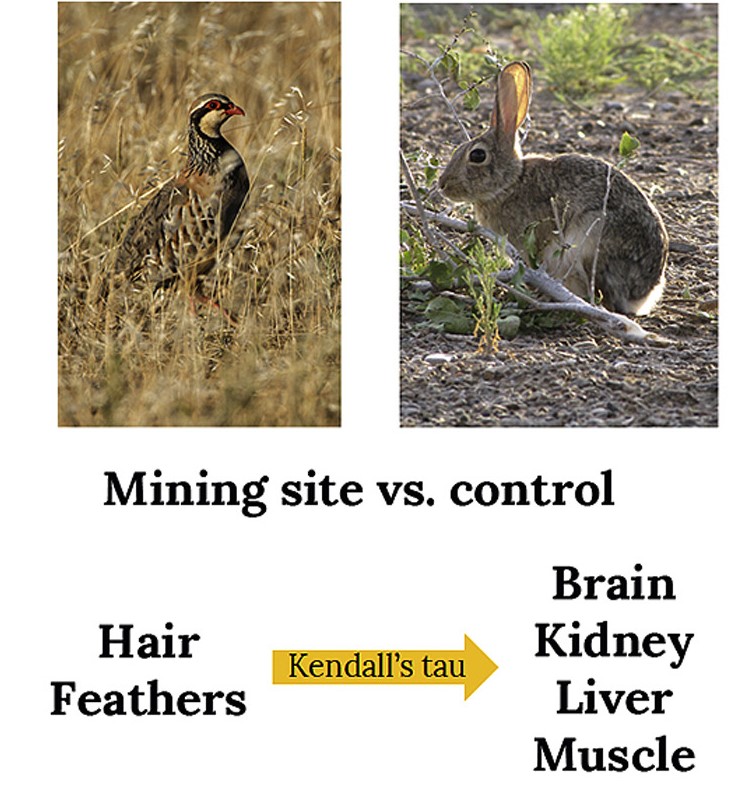Mining is responsible of releasing trace elements to the environment with potential negative effects on wildlife. Traditionally, wildlife exposure assessment has been developed by analyzing mainly environmental compartments or internal tissues. Nowadays, the use of non-destructive matrices such as hair or feathers has increased. Nevertheless, its use in free-living terrestrial mammals or in birds other than raptors or passerines is less frequent. The main objective of this study was to determine the potential for hair and feathers in a rabbit and bird species to be used as non-invasive proxy tissues for assessing internal metal concentrations at polluted sites from mining. It was tested whether hair of European rabbit (Oryctolagus cuniculus) and feathers of red-legged partridge (Alectoris rufa) can be used as non-destructive biological monitoring tools of both essential (Cu, Zn) and non-essential (Pb, Cd, As) trace elements in a currently active copper mining site. Significant different concentrations, particularly in non-essential elements, between reference area and mining site were found. Non-essential elements Pb and Cd showed higher correlations between tissues and hair/feathers, while few significant patterns were observed for essential elements such as Cu and Zn. Although feathers showed lower levels of correlation with internal tissues than hair, both could be useful as non-destructive biological monitoring tools. Further tissues, and more importantly, hair and feathers allowed discrimination between polluted and reference sites to indicate bioavailability and pollution status. In addition, hair and feathers can be used in monitoring pollution of an active mining site, being specially interesting for biomonitoring a certain period of time in the event of a particular episode of pollution, in addition to the chronic exposure. As occurred with hair in rabbits, feathers seem to be a good compartment to detect differences between a potential polluted area, such the surrounding of an active mine site, and a non-polluted area.. informacion[at]ebd.csic.es: Gil-Jiménez et al (2020) Feathers and hair as tools for non-destructive pollution exposure assessment in a mining site of the Iberian Pyrite Belt. Environm Pollution 263, 114523 DOI 10.1016/j.envpol.2020.114523
https://www.sciencedirect.com/science/article/pii/S0269749119371489?via%3Dihub

 Las altas temperaturas están provocando que las lagunas y las marismas de Doñana pierdan agua rápidamente
Las altas temperaturas están provocando que las lagunas y las marismas de Doñana pierdan agua rápidamente




